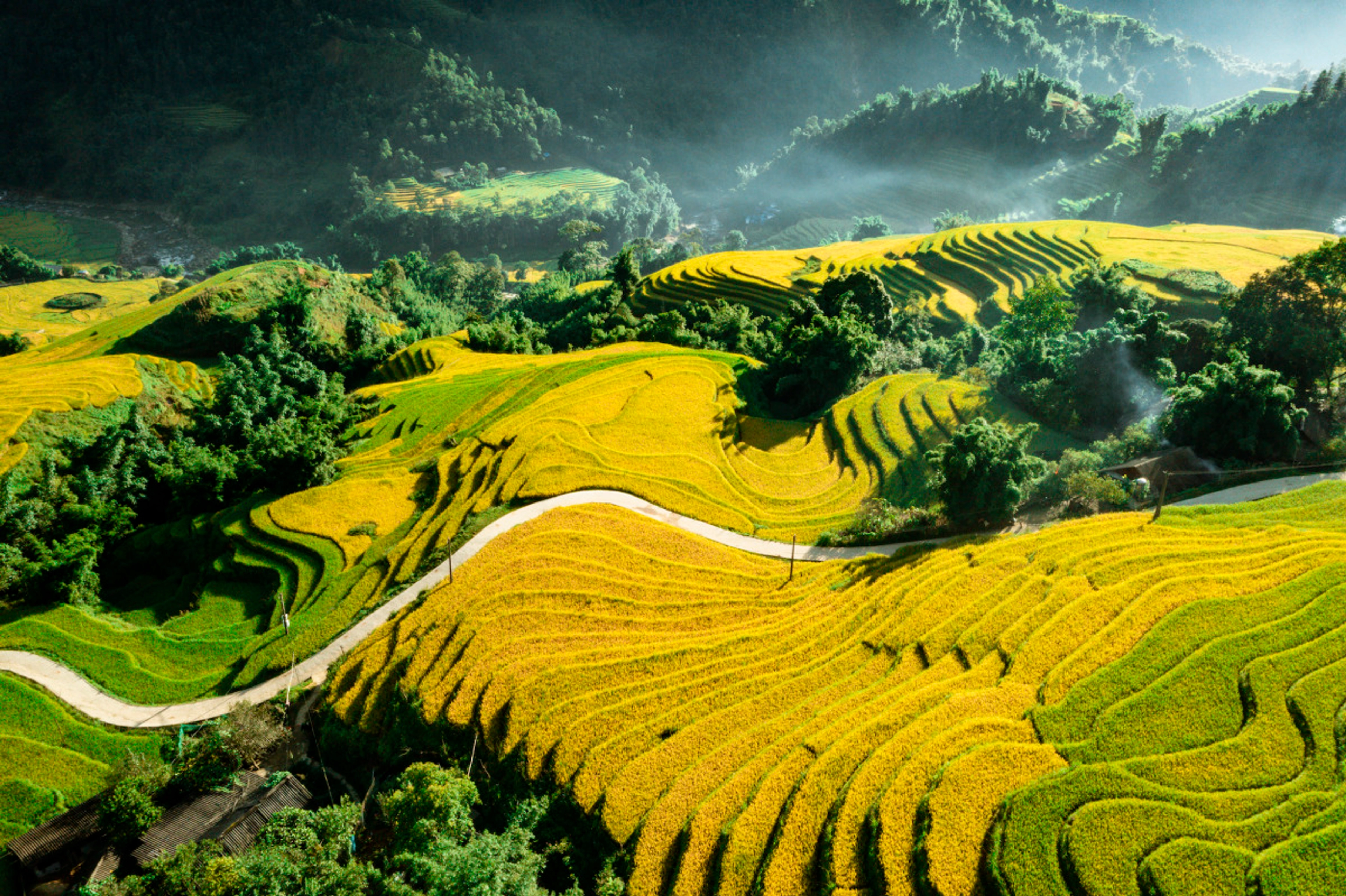

If you are looking for an attractive tourist destination that brings you wonderful experiences about the nature, culture and people of the Northwest mountains and forests, Ta Van village is a perfect choice. Let's explore the beauty of Ta Van village with BDATrip through the following article!
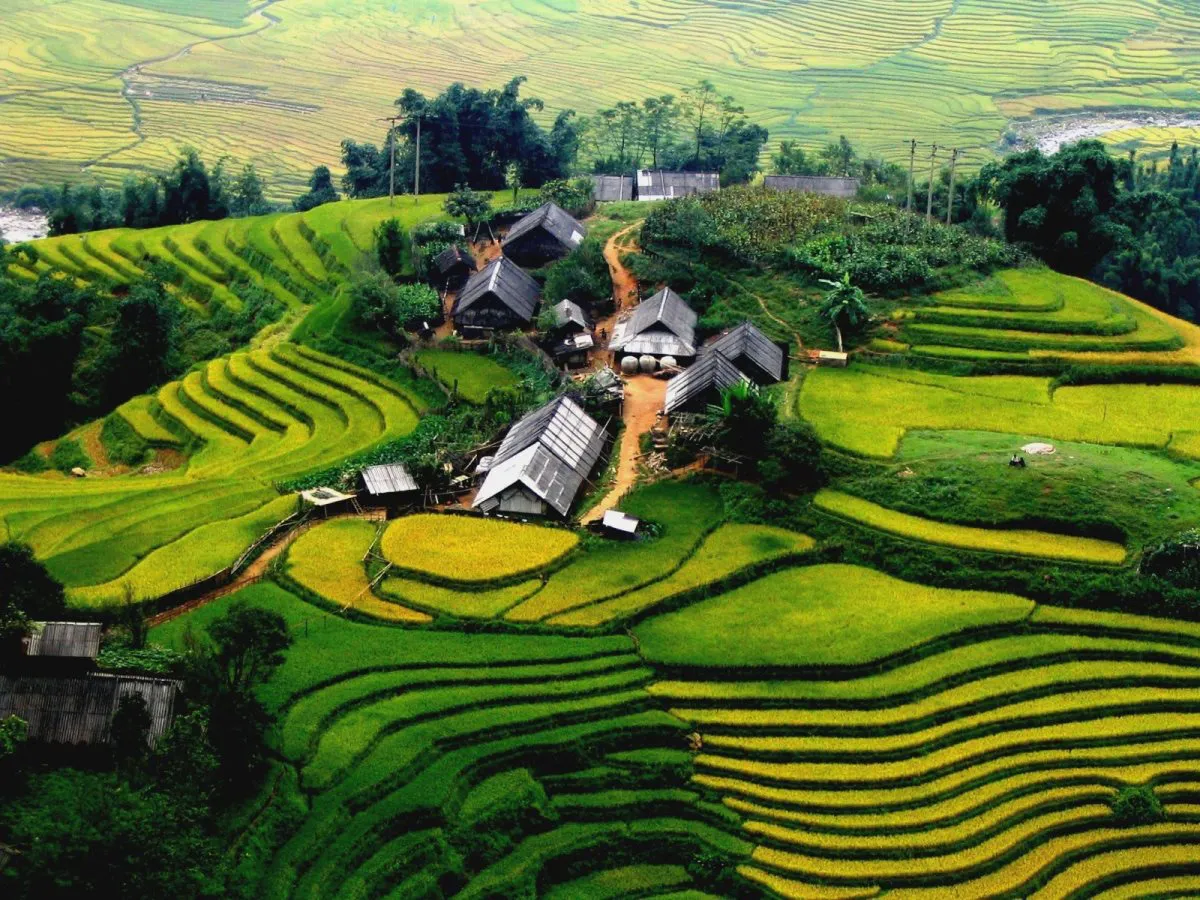
Ta Van village is a small village in Ta Van commune, Sapa district, Lao Cai province, about 12km from Sapa town center. Ta Van village is known as the "muse of the Northwest mountains and forests" because of its wild, peaceful beauty and rich national cultural identity. Ta Van village is surrounded by the majestic Hoang Lien Son mountain range and winding Muong Hoa stream. This place has a cool climate all year round, with vast golden rice fields, rustic stilt houses, and winding red dirt roads. Ta Van village is inhabited by the Mong, Red Dao and Giay ethnic people. The people here live in harmony, are friendly and are always ready to welcome visitors. Coming to Ta Van village, visitors will immerse themselves in the simple life of indigenous people, participate in unique traditional festivals and enjoy delicious dishes with bold mountain flavors.
The terraced fields here were formed thousands of years ago, by the diligent and creative hands of local people. Terraced fields are created by excavating soil, building it into steps, following an arc shape, winding along the mountainside.

The terraced fields here have an area of up to 600 hectares, with tens of thousands of fields. Fields of different sizes are stacked on top of each other, creating an extremely majestic and magnificent scene. The best season to see terraced fields is during the ripe rice season, from August to September. At this time, the fields are covered with a bright yellow color, stretching far and wide, creating a beautiful natural picture. Terraced fields are not only a masterpiece of nature, but also a symbol of culture and vitality of ethnic minorities in Sa Pa. Terraced fields have contributed to the unique and attractive beauty of the Northwest region.
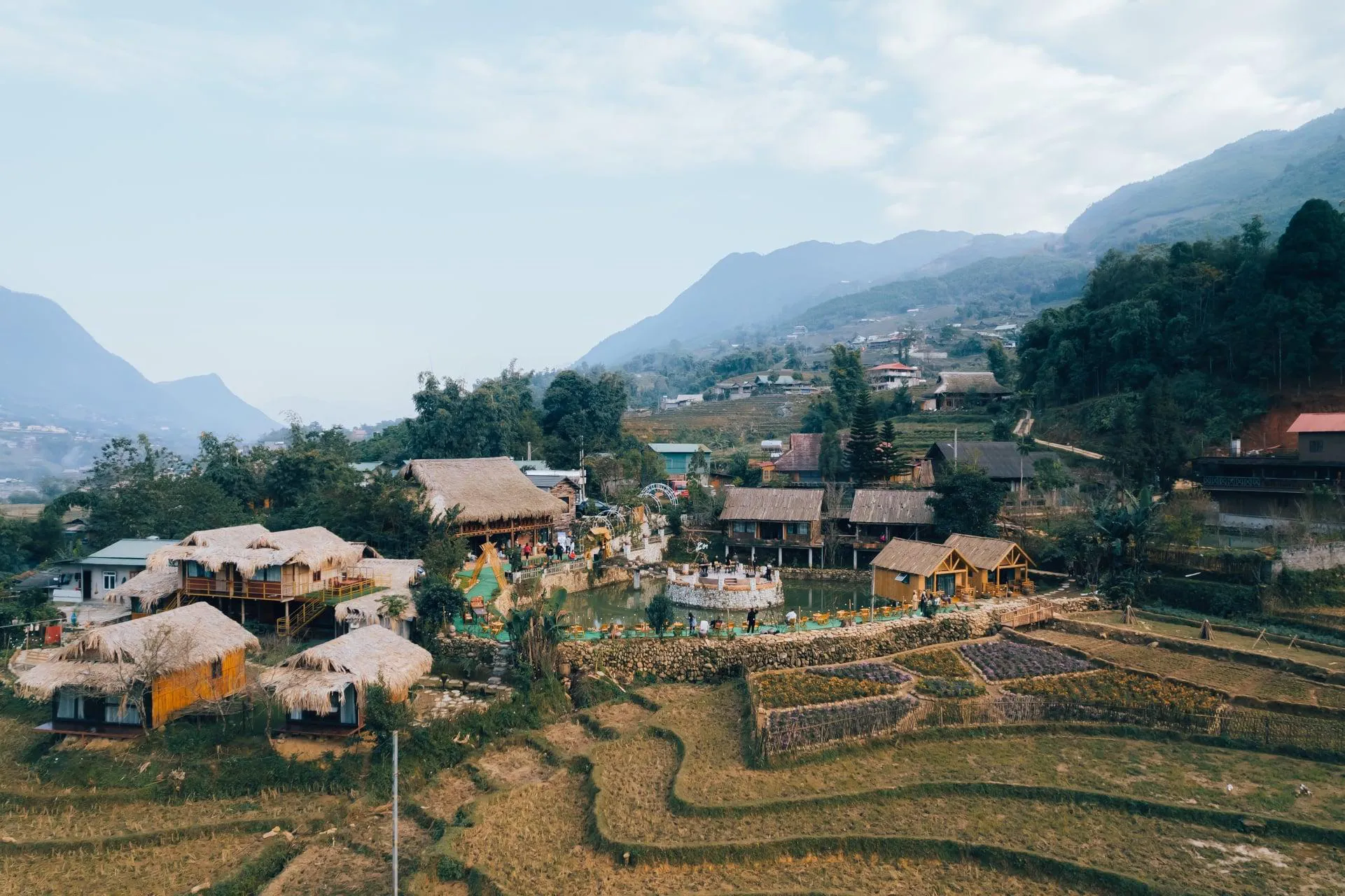
The houses of people in Ta Van village are built in the style of stilt houses, a tradition of ethnic minorities in the Northwest. Stilt houses are usually made of wood, bamboo, and roofs made of palm or leaves. Stilt houses in Ta Van village usually have three floors, the lower floor is a place to keep livestock, the middle floor is a place for family activities, and the upper floor is a place to worship ancestors. Stilt houses often have quite large areas, up to hundreds of square meters.
Regarding architecture, stilt houses in Ta Van village are usually rectangular in shape, divided into many compartments. The main room is where the ancestral altar is located, the next room is the family's common living area, and the remaining room is the sleeping place for family members. Today, many stilt houses in Ta Van village have been renovated and upgraded, but still retain their typical traditional features. Stilt houses are still one of the prominent highlights of the village, attracting tourists to visit and explore.
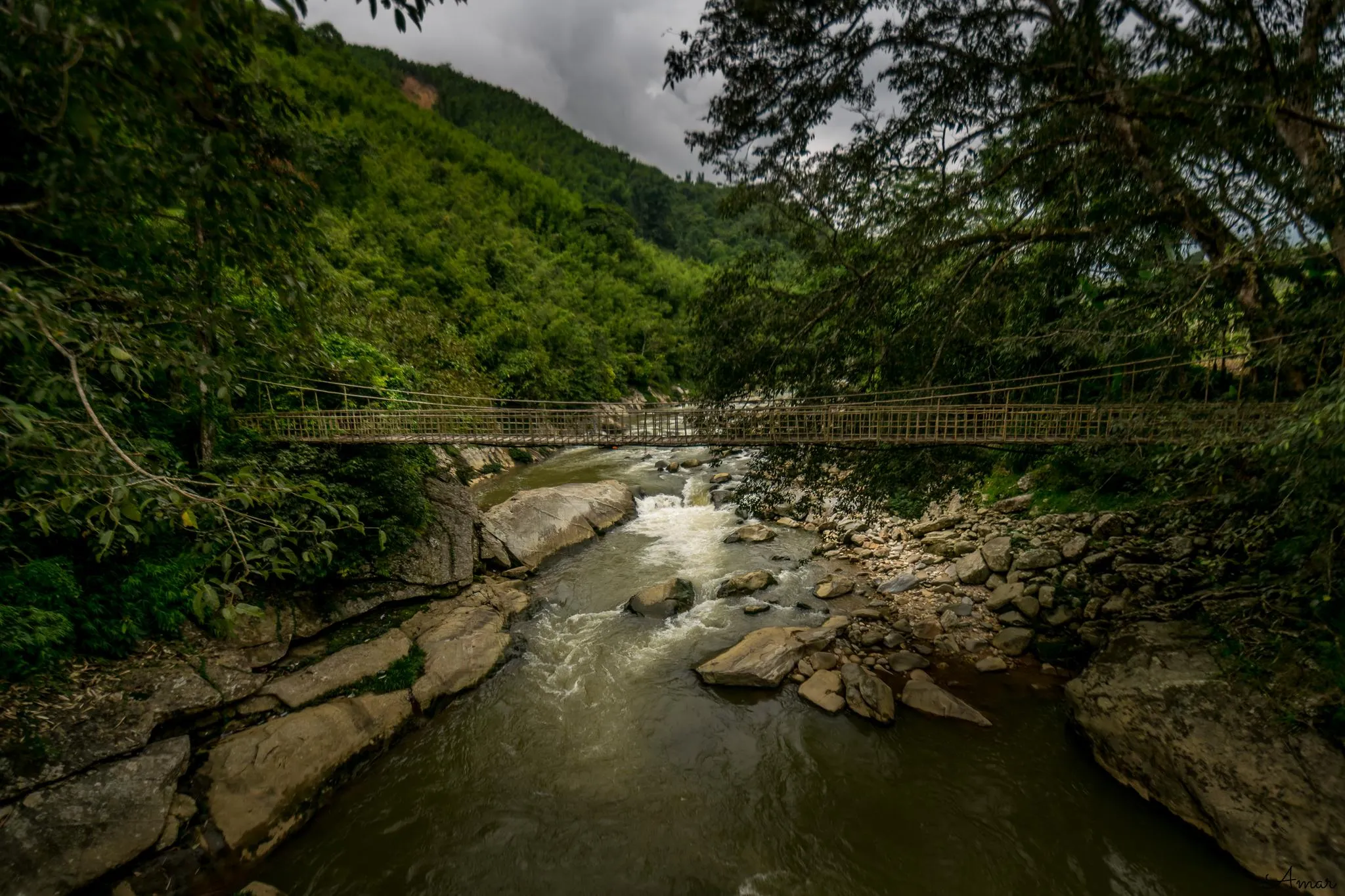
Cau May in Ta Van village is one of the most famous tourist destinations in Sa Pa, Lao Cai. The bridge is made entirely of rattan and bamboo, skillfully woven together, creating an extremely poetic scene. Cau May is located in Giang Ta Chai village, about 17 km southeast of Sa Pa town center. The bridge spans Muong Hoa stream, connecting Ta Van village with other villages in the area. Cau May is about 80 meters long and about 1.5 meters wide. The bridge is made from sturdy forest rattan fibers, firmly woven together. The bridge deck is paved with wooden planks, creating a smooth, easy-to-walk surface.
Cau May was built a long time ago and was hand-made by local people. The bridge is used as a means of transportation for people in the village, and is also an attractive tourist destination attracting domestic and foreign tourists. Cau May bears the traditional culture of ethnic minorities in the Northwest. The bridge is a testament to the ingenuity and creativity of the indigenous people. Cau May is also a symbol of the attachment and solidarity of the people in the village.
When going to Ta Van village, you can rent a motorbike or bicycle to visit tourist attractions in the village. You can also rent a car or taxi to go to other tourist destinations in Sa Pa.

Ta Van village is an attractive tourist destination, attracting domestic and foreign tourists all year round. However, the most ideal time to travel to Ta Van village is in the fall, October to December every year. At this time, the weather in Sa Pa is cool and pleasant, the average temperature is 15-20 degrees Celsius, neither too hot nor too cold, suitable for sightseeing and exploration activities. In particular, in the fall, the terraced fields in Ta Van village turn bright yellow, creating a beautiful natural scene.
In addition, you can also travel to Ta Van village in the spring, from March to May. At this time, the weather in Sa Pa is warm, plum and peach blossoms bloom, creating a natural scene. beautiful, full of life. However, you should avoid traveling to Ta Van village in the winter, from December to February. At this time, the weather in Sa Pa is very cold, the temperature can drop below 0 degrees Celsius, making it difficult to travel. transfer and sightseeing.
Thang co is a popular and indispensable dish in the cultural life of ethnic groups in the Northwest, especially in highland markets. This dish is considered a symbol of the culinary culture and national identity of this land. Traditional thang co is cooked from horse meat, horse organs and 12 spices, including thang co plant. Horse meat is selected as healthy, disease-free horse meat, slaughtered and cleaned immediately after death. The horse's internal organs are also thoroughly cleaned, removing all dirt and odors. Thang co is prepared quite simply but requires technique and experience.
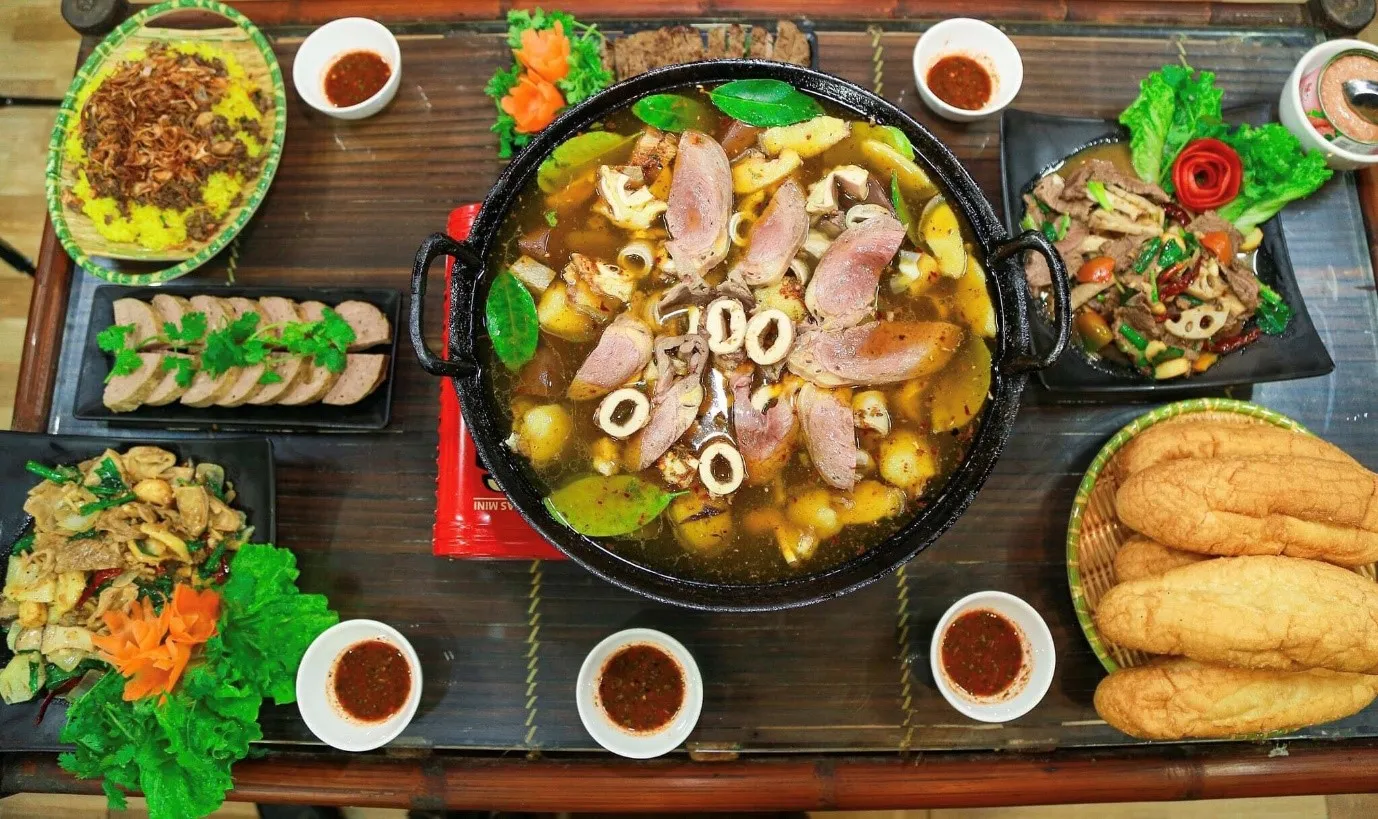
Horse meat and organs are marinated with traditional spices for about 30 minutes. After that, everything is put into a large pan, stir-fried until the meat is firm, then water is poured in and simmered on a hot charcoal stove for many hours. Parts such as: intestines, heart, liver, blood, meat, bones, are added last and boiled, vegetables can be added. When eating, people will scoop the broth into the hot pot, cut up the horse meat and put it in. The accompanying dipping vegetables are catfish, kohlrabi, hot pot cabbage... The dipping seasoning is made with a special chili sauce in Muong Khuong that has a salty, spicy, strong taste, and when eaten has a warming effect. Horse internal organs, when cleaned, have a very fragrant taste and are very crunchy and delicious. The unique taste of horse meat, rich and sweet mixed with dipping spices, is truly unparalleled. Thang co is a dish with bold flavors of the Northwest highlands. This dish is not only delicious but also represents the cultural beauty of the ethnic groups here.
Sapa stream fish is one of the famous specialties of this land. There are many types of stream fish here, such as goby, sturgeon, ditch fish, salmon,... and all have the common characteristic of not having a fishy taste. Sapa stream fish are usually small in size, only 2-3 fingers in size. Fish are often green to easily camouflage themselves into moss and rock crevices.
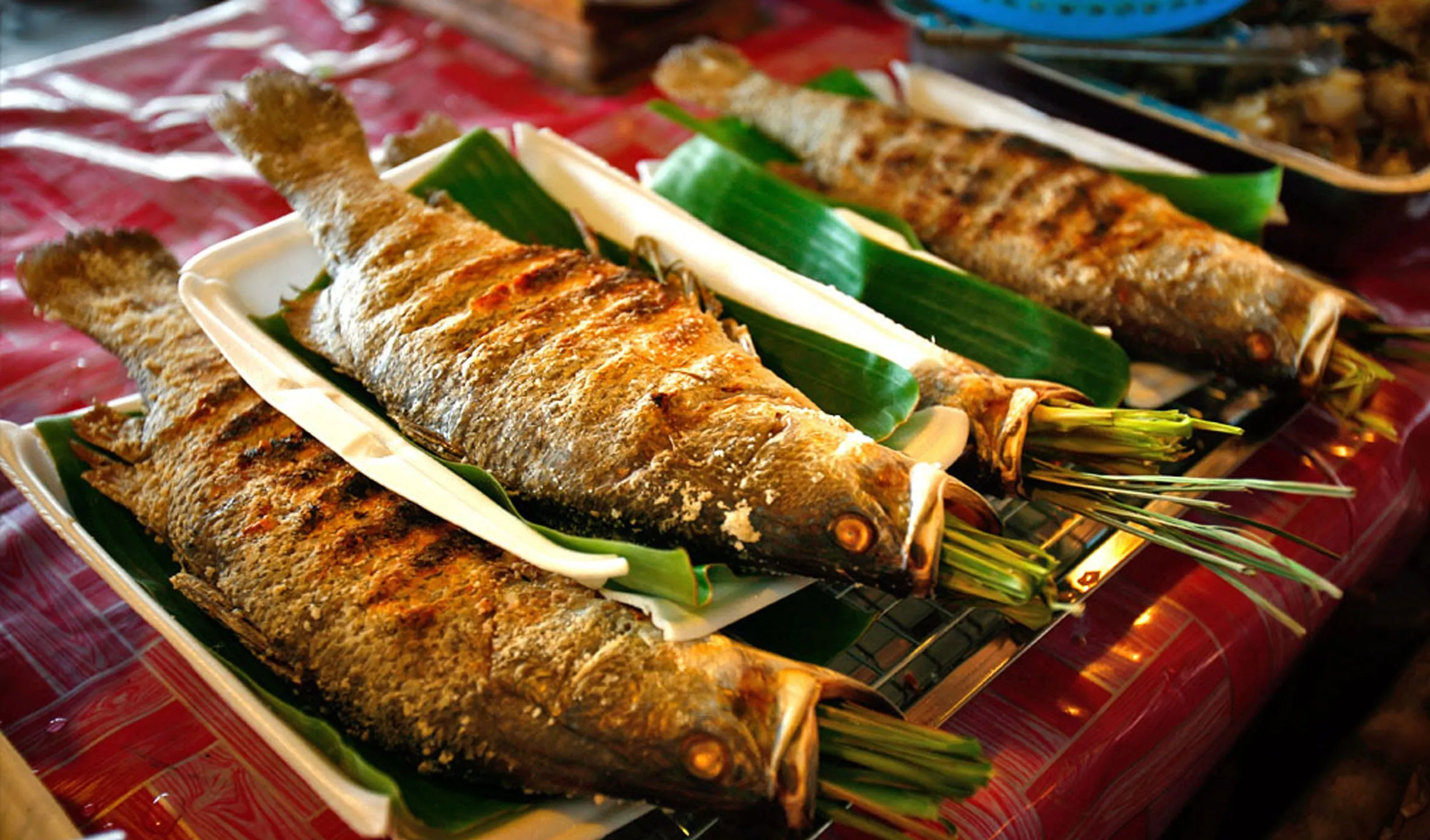
The way to prepare Sapa stream fish is quite simple but brings a delicious and attractive flavor. The most popular dish is crispy fried stream fish. The fish is cleaned, marinated with spices and then fried in a hot oil pan. When the fish is cooked, the outside scales are crispy and the meat inside is fragrant, sweet, and chewy. Crispy fried stream fish is often eaten with boiled spinach, shrimp paste mixed with lemon and chili and hot rice. In addition to crispy fried stream fish, local people also have another unique dish: steamed stream fish intestines. The fish intestines are cleaned, washed thoroughly, marinated with spices and then steamed. This dish has a greasy, delicious taste, has the effect of nourishing the kidneys, helping men stay healthy and women stay youthful. However, many lowland tourists coming to Sapa often do not dare to eat stream fish intestines for fear of "stomach upset". This makes local people, especially men, very excited. They believe that stream fish intestines are a nutritious dish that only indigenous people can enjoy.

Armpit pigs are a native pig breed of the Northwest highlands, raised freely in the wild. Armpit pigs are small in size, only about 10-20kg, with a sturdy body and smooth black skin. Armpit pork is very delicious, low in fat, firm, and naturally sweet. Armpit pigs are raised freely, forage for themselves in the forest, and eat wild vegetables and wild tubers, so the pork has a characteristic sweet taste of nature. In addition, armpit pigs are often raised for a short time, only about 1 year, so the pork is very firm and not mushy.
Ta Van village is an ideal destination for those who love to explore nature and culture. The village has bold beauty of the Northwest mountains, with majestic terraced fields, traditional stilt houses, and unique festivals. If you have the opportunity to come to Sa Pa, don't forget to explore the beauty of Ta Van village to have memorable experiences.
Copyright © 2022 BDATrip.com | All rights reserved.